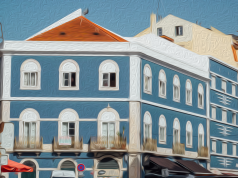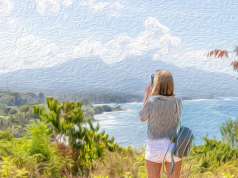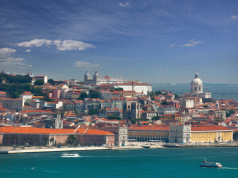Lisbon is the capital city of Portugal. With its population of over 3 million people, it is the 11th most crowded city amongst European Union cities. Lisbon’s population constitutes over a quarter of the total population in Portugal. The city is one of the most popular tourist destinations in the world. As a result, Lisbon’s Humberto Delgado Airport welcomes more than 20 million visitors per year.
Historically, Lisbon is one of the oldest cities in Europe. Under the Phoenicians’ reign, Lisbon was used as a trade port with its strategic location during 1200s BC. The city that spent several centuries under Rome’s reign and then several centuries under Muslims’ reign offers many antique beauties to its guests.
Apart from its historical attractions, Lisbon also offers a vibrant, modern city life with attractions for both who seek peace and adventure. The city’s nightlife is among the bests of Europe. All these qualities make it very hard to finish a trip to Lisbon in just a few days. A three-day trip is the minimum suggested timespan to be able to enjoy Lisbon to the fullest, and this guide is here to help tourists with essentials.
Tips to Make the Best of the Day in Lisbon
First of all, when traveling in a hurry, it is crucial to know the best means of transportation. Lisbon’s famous yellow streetcars are the most popular transportation option within the city. These vintage cars connect the city’s narrow and acclivitous streets. These cars have been working for the city’s transportation for almost 150 years now. One trip tickets for these cars cost 2.90 euros. So, it would be more logical to buy daily tickets which cost around 6 euros. Lisbon’s subway network is not highly developed, but it is efficient. However, to be able to travel through the city’s unique atmosphere, the subway is not the ideal choice. City’s more developed bus network might be a better idea when it comes to observing the city during trips. One trip tickets for the metro costs 1.40 euros and costs 1.80 euros for the buses.
Second, traveling essentials are important to be able to enjoy the day. What to pack for Lisbon, of course, differs according to the season. Considering that the most popular tourism period of the capital is summer, the essentials of the backpack are light items. Several t-shirts, shorts, skirts and swimsuits are musts of the list. Ocean winds of the capital might make the weather cool at nights even in summers. So, it would be a good idea to pack one or two jackets just in case. Considering the amount of sunny days, a hat and a powerful sunscreen are not to be forgotten before the trip. Finally, a smaller pack for daily use would be ideal since traveling around with a huge backpack might take the joy out of the trip.
Finally, obtaining a Lisboa card that grants entrance to many tourist attractions and substitutes for transportation fees is a money and time-saving idea.
Lisboa Card
For museum entrances and transportation fees, tourists can obtain a Lisboa Card which has different versions for 1 day, 2 days, or 3 days. These cost differently, but definitely worth the money. Lisboa Card can be obtained at the airport. One day version of this card costs 19 Euros, 2 days version costs 32 Euros, and 3 days version costs 40 Euros.
Essentials of the Three-Day Trip in Lisbon
Three days in Lisbon is close to being optimum to be able to enjoy the city to the fullest. This three-day itinerary suggests starting with the central districts of Alfama, Chiado and Baixa. Later on the first day, it is a good idea to enjoy a nice dinner accompanied by a Fado performance and call it a day. On the second day, the Belem district probably takes most of the time and energy, but still, the tourists can rest while enjoying a tram tour of Lisbon and continue the night with awesome parties in Bairro Alto or Cais do Sodre. The last day of the trip involves Parque das Nações, Museu Calouste Gulbenkian, and Alcantara.
Day 1: Alfama, Baixa, and Chiado
The oldest district of Lisbon, Alfama, is a former worker town with postcard-beautiful cobblestone streets and maze-like medieval layout. A very poor and distant town in the past, Alfama, is now one of the most popular destinations in Lisbon for tourists.
VIP (Very Important Place): Sao Jorge Castle is in the Alfama region and it is one of the most important tourist attractions in the country.
The central district of Lisbon named Baixa is one of the first examples of a grid plan urban layout. After the devastating 1755 earthquake of Lisbon, this district had to be entirely rebuilt. Now displaying its great baroque architecture along with nice avenues and plazas, Baixa is the modern center of Lisbon. In Baixa that is very popular with tourists, it is very easy to find quality restaurants and art shops that mostly appeal to the contemporary taste.
VIP: Praça de Comercio
Chiado is the theatre and shopping center of Lisbon. Formerly home to the artists of the city, Chiado is still the first place that comes to mind when art and style are mentioned in Portugal.
VIP: Sao Roque Church
Fado and Dinner
In the first evening of the trip, it is a great idea to dine at Baixa’s open-air restaurants. Later attending a Fado performance in Baixa, Alfama, or Bairro Alto is a good way to end the night. Fado, famously, is a music style originated in Lisbon, and it involves a powerful, emotional, expressionistic style.
Day 2: Belem
The famous Belem district of Lisbon has a large history of seafaring. This district is the place where Vasco de Gama spent his last night before sailing for India. Once an important port city of Portugal, Belem is now a huge and immensely popular tourist destination. One of the most popular ones of these attractions is Torre de Belem which dates back to the 16th century. Built as a defense mechanism against the naval attacks, this tower now is one of the most iconic images of Lisbon.
VIP: Pastel de Nata traditionally emerged from the Pasteis de Belem in this district.
Tram Number 28

This tram is a great opportunity to enjoy the city sights while having a rest in the evening.
One image that is found in many postcards of Lisbon is the yellow tram number 28 strolling through narrow streets. This tram is a great opportunity to enjoy the city sights while having a rest in the evening. On the route of tram 28 are many beautiful places like The Basilica de Estrela, The Estrela district, Miradouro da Graça, and The Jardim de Estrela.
Night Out in Lisbon
It is a good idea to spare the middle night of the trip for partying, and Bairro Alto and Cais do Sodre districts are the best place for it. There are some great pubs to start the night in Bairro Alto which often spill out to the streets. Later, fun usually moves into the clubs where people spend time until morning.
Day 3: Parque das Nações
Appealing to more contemporary tastes, The Parque das Nações is the modern side of Lisbon that is built for Expo ’98. After the Expo, this town had converted into –and still serves as- a business center for Portugal. Some attractions around include Oceanário de Lisboa, Torre Vasco da Gama, and The Ciência Viva.
Gulbenkian Museum
One of the biggest art museums in the country, the Gulbenkian Museum is a great place to visit for art lovers. The museum includes both ancient Eastern, and classical European pieces. Also in a nice and peaceful district, Gulbenkian Museum is worth a stop.
Alcantara
Alcantara district of Lisbon is one of the most rapidly developing districts of the Portuguese capital. Also, host to the Santo Amaro Docks and the LxFactory, the district of Alcantara provides tourists with plenty of sophisticated bars and restaurants.






